Join the Great Sunflower Project by growing sunflowers this summer. Lemon Queen Sunflowers are the official sunflower for citizen scientists to grow in the Great Sunflower Project. This is an educational project that’s attractive for homeschoolers, garden clubs, naturalists, gardeners, and community food gardens to participate in. If you’ve got children that complain of being bored when school is out, this is an awesome way to get them outside in nature and interested in science.
While you can grow hybrid sunflowers for a cutting garden or giant sunflowers for competition, growing sunflowers for pollinators takes a different kind of management. Hybrid sunflowers bred for florist arrangements are pollenless, while giant sunflowers are selected to produce a single flower the size of a dinner plate. Pollinator-friendly sunflowers, on the other hand, are branching sunflowers that are rich in both pollen and nectar for bees, butterflies, and even hummingbirds. Here’s how to grow the best sunflowers to attract pollinators to your garden. And while you are putting the effort in to grow them, why not participate with thousands of other backyard naturalists in the Great Sunflower Project.
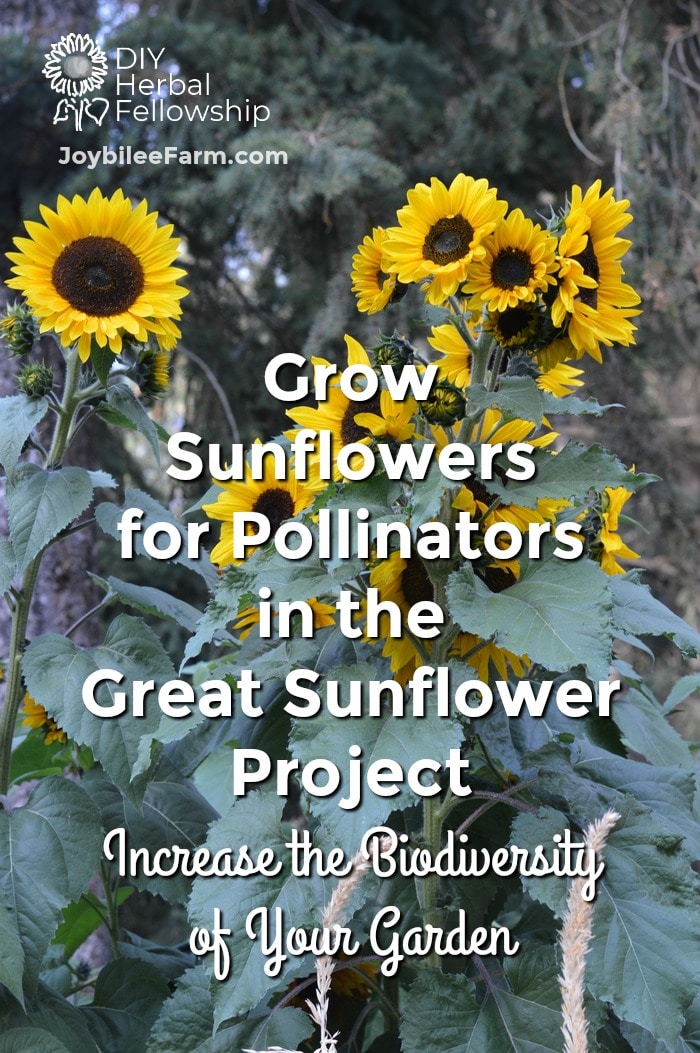
What is the Great Sunflower Project
Bees are responsible for 1 out of every 3 bites of food we eat. Yet, they are struggling to survive due to loss of habitat, pesticide use, parasites, and other pathogens. Biologist, Gretchen LeBuhn started The Great Sunflower Project in 2008 as a way to track the health of pollinators and measure the effects of neonicotinoid pesticides on bee populations and pollination services throughout the USA and Canada. It started as a project of the Department of Biology at San Francisco State University. Since 2008 it has expanded to include most of the USA and some of Canada.
The project focuses on observational data collected by citizens who count the number of wild bees and honeybees that visit their gardens. The most useful information is gained from bees visiting Lemon Queen Sunflowers during the bloom period. Other flowers and other kinds of sunflowers are used in the project as well, but the Lemon Queen Sunflowers have official sanction.
The idea behind the project is to plant flowers, observe how many and how often bees visit those flowers, and then enter that information into a database on The Great Sunflower Project Web site. The project has since expanded so that citizen scientists can also plant Bee balm, Cosmos, Rosemary, Tickseed, and Purple coneflower for the purposes of this research. — Scientific American
It takes less than an hour over the entire summer to offer valuable observations for the Great Sunflower Project. 5 to 15 minutes, just 4 or more times during the growing season. But the rewards are immense. Not counting all the benefits of time spent in nature, which has been shown to reduce blood pressure, reduce anxiety and depression, and improve immunity, the project also improves the biodiversity of your garden, supports native pollinators, and trains your mind in observation, keeping it young and flexible.
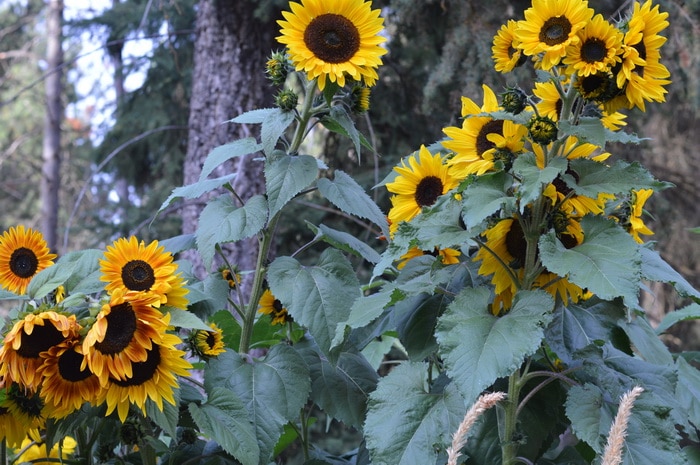
Why Lemon Queen Sunflowers?
Many sunflowers planted in home gardens are hybrid sunflowers that are bred to be pollen-less. They do provide nectar to visiting bees, but the pollen necessary for raising brood is absent. This is appealing for those who plant sunflowers as part of their flower cutting garden. Sunflower pollen is prolific and can make a mess of tablecloths and furniture when brought indoors for flower arrangements.
Bees, on the other hand, need the pollen. It’s like bee-bread. Their young depend on it. A 2018 study in the scientific journal, Nature, showed that sunflower pollen has medicinal properties for both wild bees and honeybees. Bees will self-medicate on sunflower pollen when ill or infected with pathogens. By planting sunflowers that produce pollen — most of the open-pollinated varieties — the needs of the bees are met and more bees come to the flowers to be counted.
- Lemon Queen Sunflowers are prolific nectar and pollen producers, making them very attractive to wild bees, honey bees, and other pollinators.
- Lemon Queen is a branching sunflower that will produce many blooms on a single stock.
- Lemon Queen Sunflower is an open pollinated sunflower that will produce seeds that can be planted the following year.
You can count on Lemon Queen sunflowers to bloom about 90 days after planting and then continue to bloom right through a light frost until you have a killing frost in your area. ( A killing frost or hard frost is −2 °C (28 °F) for an extended period.)
These sunflowers are annual flowers and need to be replanted each spring. However, since Lemon Queen sunflowers are open pollinated you will be able to plant your own seed if you are only growing one kind of sunflower. If you have both hybrid sunflowers and open pollinated sunflowers growing in your garden, you may want to buy fresh Lemon Queen Sunflower seed each spring, if you plan to make the Great Sunflower Project a regular part of your summer garden fun. Bees will visit all the sunflowers in your yard and the seeds resulting from cross-pollination will be hybrid seeds with unknown characteristics.
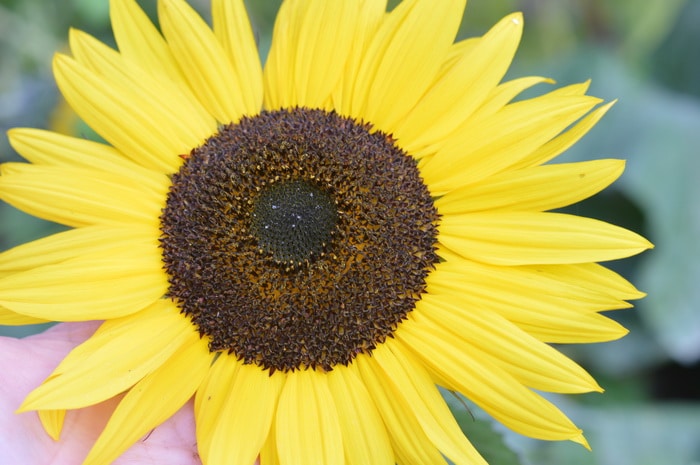
Growing Sunflowers for the Great Sunflower Project
- Purchase untreated Lemon Queen Sunflowers. (This is the only cost to participate in this project, less than $3) You can get Lemon Queen Sunflower Seeds at Renee’s Garden (40 seeds — 13 foot row) or Bakercreek Seed (25 seeds — 8 foot row) for this project.
- Sunflowers need at least 6 to 8 hours of sunlight a day for optimal growth. Plant them in full sun.
- Before planting, cultivate the ground to a depth of at least 18 inches and amend the soil with well rotted compost, kelp meal, and liquid fish fertilizer. Add 1 teaspoon of borax to 1 1/2 cups of water and spread over a 15 foot row. If you can, prepare the ground near a fence or wall in full sun. Lemon Queen sunflowers grow 5 to 6 feet in height and can fall over in the wind if they have no support.
- About 2 weeks before your last expected frost, pre-soak the sunflower seeds overnight to encourage germination. Plant the soaked sunflower seeds 1/2 inch deep, 4 to 5 inches apart in rows. Keep the soil evenly moist. Covering with landscape cloth can hold heat in the soil and aid in germination. It can also protect the young seedlings from bird predation before they are fully rooted.
- Germination takes 7 to 14 days, depending on your soil temperatures.
- When the sunflowers have 4 true leaves and are about 6 inches tall, thin the plants to 12 inches apart. The thinnings can be transplanted easily at this stage if you want to expand the bed. This spacing will produce sturdier plants with thick stalks, deeper roots, and larger flowers than a closer spacing.
Within a month from the first true leaves, the sunflowers will begin to form their first flower buds. These first buds will take 3 to 5 weeks to fully open and begin to be visited by pollinators. Once that first bud is fully open Lemon Queen Sunflowers will send up secondary buds with flowers as large as that first flower. And the plants will continue to develop new flowers right up till October or whenever the hard frost comes in your area. This gives a long opportunity for native pollinators, honey bees, and butterflies to visit. Even hummingbirds have been seen feeding on sunflowers.
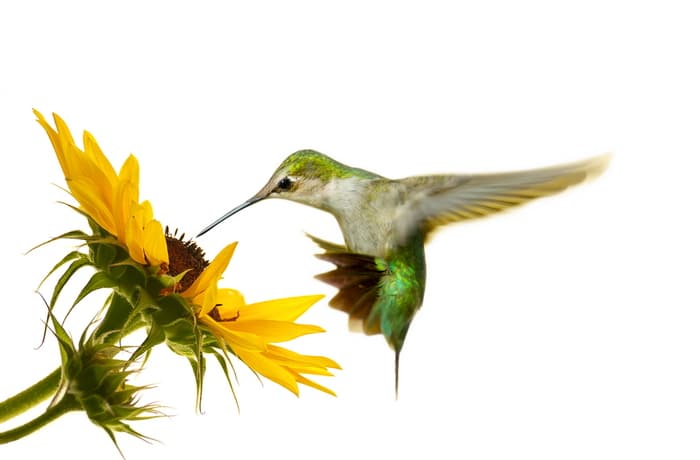
Once that first flower opens the count can begin.
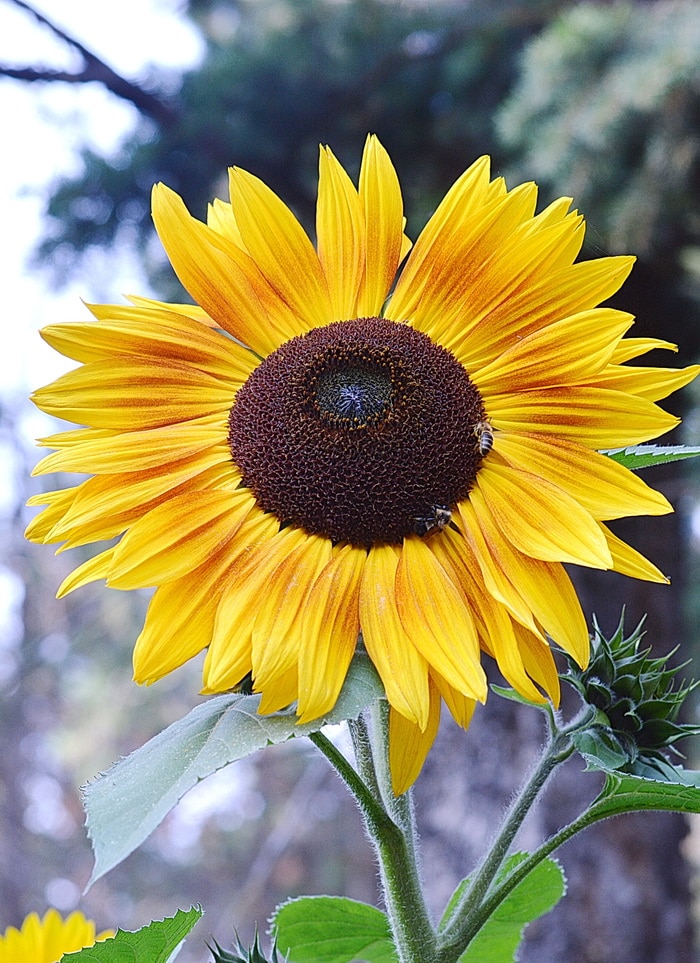
How to participate in the Great Sunflower Project
- Plant untreated Lemon Queen Sunflower Seeds, the official sunflower for the Great Sunflower Project
- Set aside 5 minutes or longer to count the number and variety of pollinators that visit your sunflowers
- Count the number of flowers/blooms that you are watching during your count
- Set your timer for at least 5 minutes and write down every pollinator that comes to the flowers in your designated time.
- Go to the Great Sunflower Project website and record your count.
Do a count at least 4 times during the season. You can register to participate in the Great Sunflower Project here. It’s free to participate.
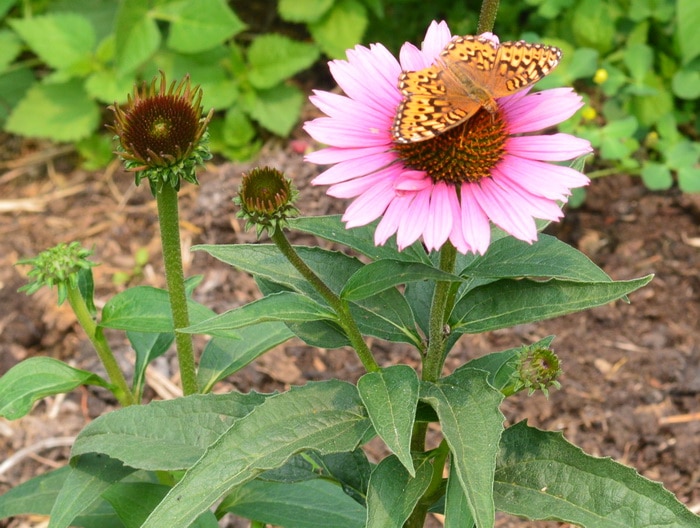
Other benefits of The Great Sunflower Project
While you don’t need to know how to identify different bee species to participate in the Great Sunflower Project, if you’d like to learn more about native pollinators, there are bee ID cards available FREE for download from the site.
This is a fun way for homeschoolers and budding naturalists to connect with nature and learn about native bees, endangered pollinators, and their own ecosystem.
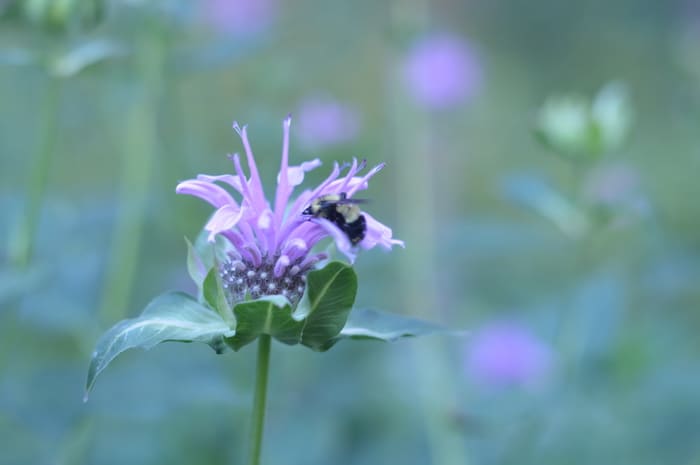
If you live in an area where growing sunflowers is hard, you can still participate in the Great Sunflower Project by making observations of pollinators that visit other plants in your gardens, such as bee balm or monarda, anise hyssop, echinacea, or even comfrey.
Register to participate in the Great Sunflower Project here, get your Lemon Queen Sunflower seed and prepare to have a fascinating summer inviting both wild pollinators and your local honeybees to your backyard garden.



Leave a Reply